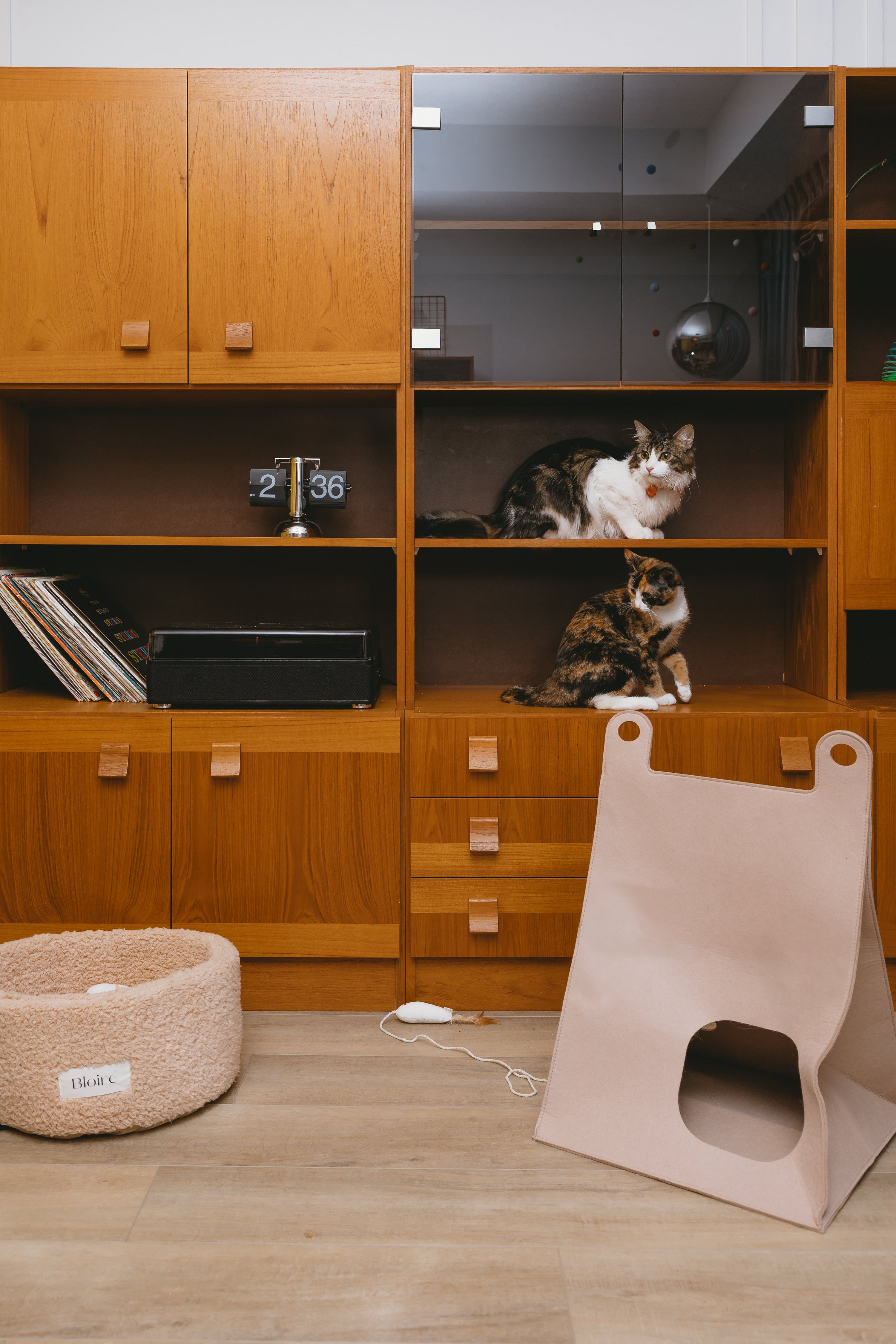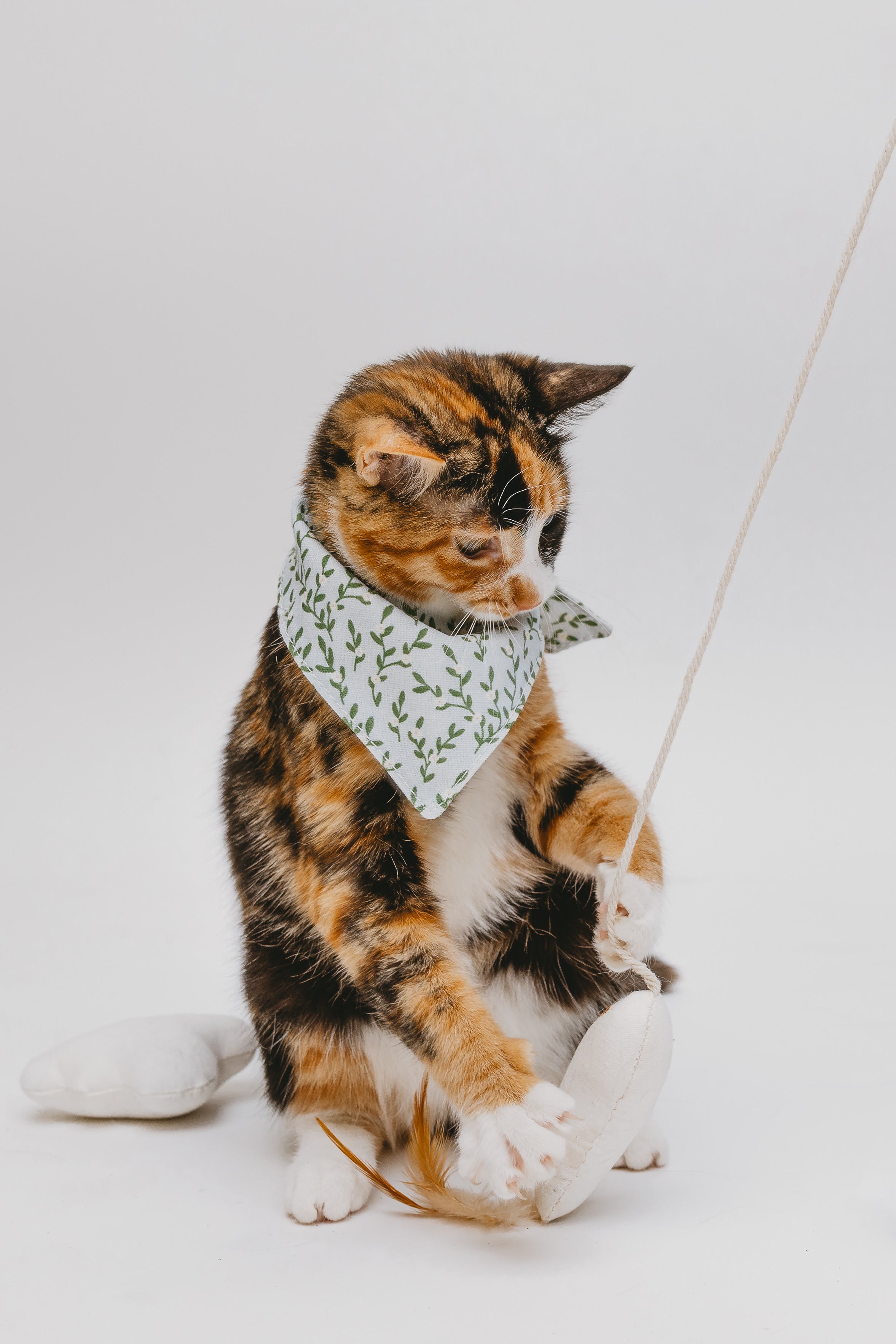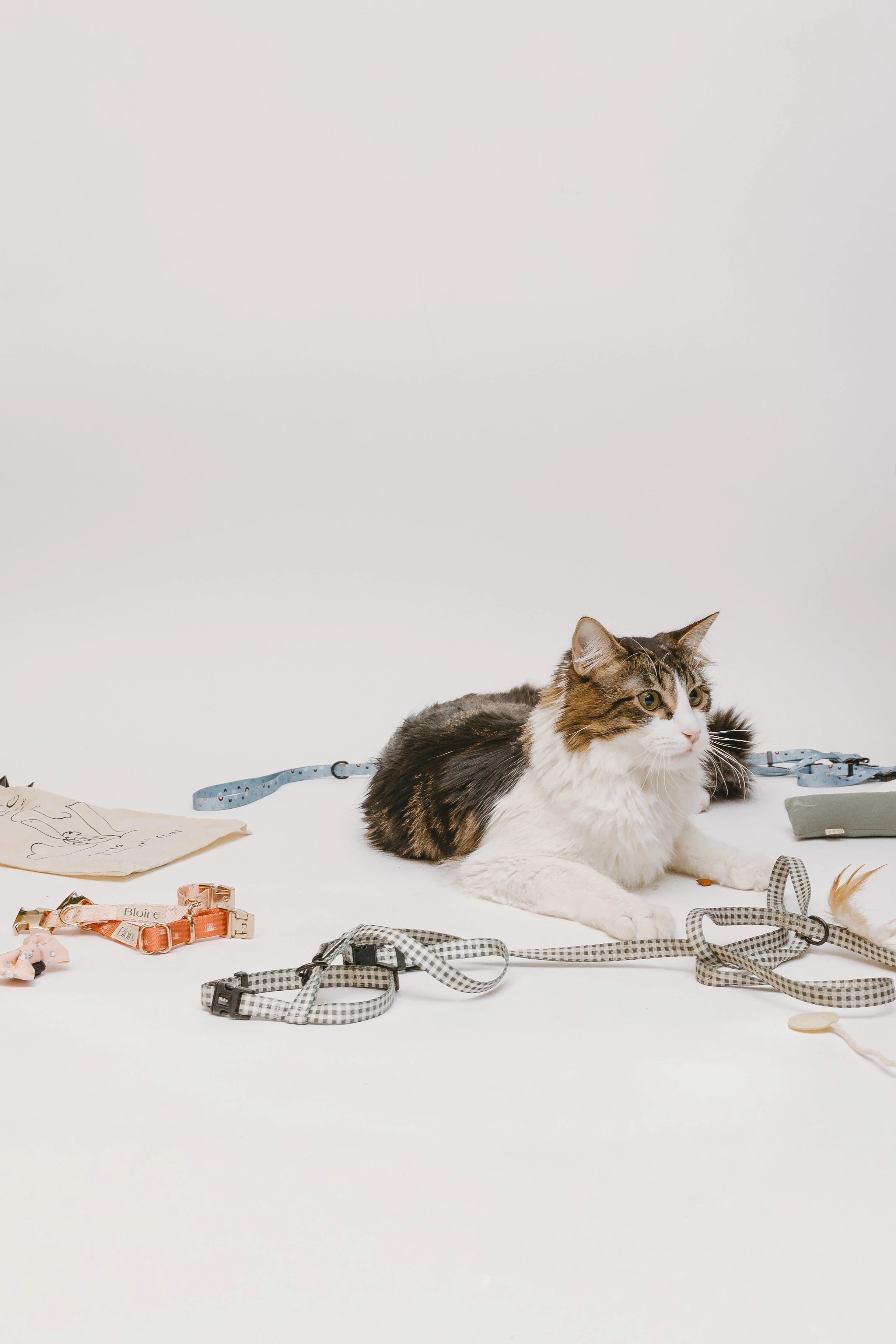

Par sophie farsaii
How to Harness Train your Cat
How to Harness Train your Cat
In this guide, we'll teach you how to harness train your cat and give you some tips on how to make the process as easy and stress-free as possible for both you and your kitty. So read on – your cat will thank you for it!
Step 1: Get a harness
The first step is to purchase a harness that fits your cat properly and a leash. It is not advisable to take your cat outside on a collar, as it could choke them and make them very uncomfortable. A harness distributes the weight on his shoulders and body, not his neck.
It is important to make sure that the harness is not too tight or too loose. You should also avoid any harnesses with sharp edges or anything that could potentially hurt your cat. Once you have the perfect harness, it's time to start training!
Photo of a harness in hands
Step 2: The introduction
Walking your cat outside only has benefits but can be intimidating if you’ve never done it before. First things first before even thinking of taking your cat outside is choosing a harness that will fit your cat.
Pick your time:
Let’s face it, your cat won’t let you measure him when he’s doing zoomies in your kitchen, so pick the right time to measure him. I’ve found for me the best time is when they’re snoozing away in the afternoon. They let me do what I must do without any complaints. Every cat is different but be sure to pick a time when your cat is chill and relaxing, trust me it will make your life way easier. If you still have trouble?
First things firsts, as you know your cat loves to get acquainted with anything new by giving it a good sniff, so let them sniff away at the leash and harness. When he is done taking in all this new information, reward them. Leave the harness near them so they can get used to it. Also, clip and unclip the harness near him so he gets accustomed to the sound.
Note: One encounter may be enough, and your cat might be fine with the harness but if he does feel stressed, do this a few times until he is comfortable with it. When he’s chill, move on to the next phase.
Photo of a harness next to Theo and of him spelling the harness
Step 3: The fitting
Putting the harness on: For this phase, leave the leash out of it. Just concentrate on the harness. Now clip the harness on your cat. And reward them well. Do this a few times before you let them walk in it, depending on how comfortable they seem.
Did your cat scream and hate it? Don’t worry, just take a few days off and go back to step one. Most cats will just lay still and not move when they try it on, but every cat is different.
Photos of me putting the harness of Theo
Step 4: The indoor walk
It’s time to let your cat walk in the harness. As he gets comfortable, let them go around their daily business with the harness. Keep these sessions short and as he gets comfortable with walking, lengthen them. Over time, leave the harness on longer and longer, and don’t forget to reward them! Have patience and next thing you know he’ll be walking quite normally in them.
From personal experience: both my cats is that they were very uncomfortable walking around in it the first time, they wiggled and even just stayed laying down.
Photos of Theo walking inside
Photo of me giving Theo a treat
Step 5: Outdoor discovery
- When you first bring your cat outside, especially if he’s never gone before or been outdoors for an extended period of time (i would recommend short visits), be prepared to have him take direction from everything around with fast reflexes! It may seem as though they cannot handle noise at all - this is not true; however, cats do respond better in calm environments where there isn't much human activity going on nearby which could startle them during their exploration stage. I found training my pet easy by only pulling slightly on the leash while calling his name every now and then. At first, give him a treat when he responds well, and he’ll become a pro walker.
Photo of Theo stepping outside
Step 6: Outdoor training
Once your cat is used too it outdoors or has accepted their harness comfortably- then start training them to walk beside you. If your cat knows their name, this step will be much easier. This is a behavioural training exercise that requires patience, but they do respond well to training. Always bring a bag of treats for their outdoor visit. Take a few steps in a direction while applying gentle pressure on their lash. Your cat might be spooked by the sound of your feet, but once the sound becomes more familiar it will no longer be intimidating. Repeat this exercise often and call out their name when they won’t move.
When you call out their name and they head in the same direction as me, give them a reward. If not, then be patient because this process can take a while but it will make them associate good feelings with following your commands!
Every walk outside will build your cat’s confidence, so let him go at his own pace and be patient. I promise it will be worth it!
Note from the author: Now, my cats know that wearing their harness means we’re going outside. They happily meow and even move with me when I put it on them! It's so cool to see how evolved they've become over time- just like humans do!
You now have the tools you need to train your cat. It will take some patience and plenty of treats, but soon enough your cat will be walking on a leash like a pro. And when people stop you on the street and ask how you did it, you can tell them that harness training is easy with the right techniques and a whole lot of love. Ready to get started? Take a look at our harness collection – we know you’ll find one perfect for your feline friend.
Author’s note : This guide has been drawn from extensive reading and experience, but it does not in any way constitute any professional advice. For professional advice, please refer to your veterinarian.





